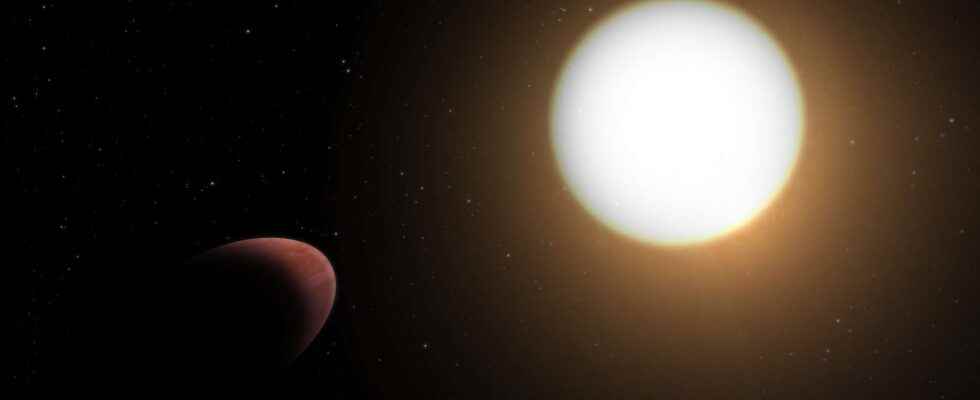As part of ESA’s Cheops mission, an exoplanet twice the size of Jupiter has been detected orbiting extremely close to its star. Result, a tidal effect such that the planet, totally deformed, has the shape of a rugby ball!
You will also be interested
[EN VIDÉO] Exoplanets What are exoplanets, where are they found and why are they so interesting? Video answer!
Launched at the end of 2019, the satellite Cheops (Characterizing ExOPlanet Satellite) of the European Space Agency’s main mission is the study of stars close to our Sun, known to harbor exoplanets in their star systems. With high measurement precision, the mission aims, among other things, to precisely characterize the sizes and densities of exoplanets detected.
Among these subjects of study is WASP-103, a star located in the constellation of Hercules around which orbit WASP-103b, a exoplanet twice as large as Jupiter and 1.5 times more massive. When discovered in 2014, the astronomers were surprised by its close proximity to its star (WASP-103b completes a revolution in just one day), and then suspected that the planet was subject to extreme tidal effects, without being able to measure them.
The transit method to observe exoplanets… but also to deduce their shape!
The Cheops satellite uses the transit method to observe and characterize exoplanets. By regularly measuring the brightness of a star, we can detect a periodic drop in luminosity, associated with the passage of a celestial body in front of the star: this is called a transit. By comparing 12 transit observations of the planet, astronomers have detected minute differences between the various transits, associated with the deformation of the planet. This is the first time that the deformation of an exoplanet has been detected in this way.
Monumental tidal effects
The tide is a well-known phenomenon on Earth: the masses of water on the surface of our Planet are subject to the gravitational attraction exerted by the Moon. But for WASP-103b, the scale of the phenomenon is much larger: due to its extreme proximity to its star, the tidal effects are very pronounced, deforming the entire planet. Thus, the planet no longer has a spherical shape, but that of a rugby ball!
To be sure, the astronomers of theESA estimated Love’s number, a parameter characterizing the rigidity of a planetary body and its susceptibility to being deformed under the effect of tidal forces. This parameter also makes it possible to estimate the composition of the planet: with a value very close to that of our Jupiter, WASP-103b very likely presents a very similar composition and internal structure, with fluid behavior.
The researchers are surprised at the passage of the abnormally large size of the planet: in principle, a planet as massive as 1.5 times Jupiter should have a relatively similar size; here, astronomers suspect that the planet is inflated due to the heat extreme that prevails near its star, but this remains to be confirmed.
The planet’s orbit raises new questions
Due to its proximity to its star, astronomers expected that tidal interactions, combined with the close proximity to the star, would cause WASP-103b’s orbit to shrink during course of time and the planet gradually falls towards its star. However, the measurements indicate the opposite, the orbital period of the planet slowly increasing: the planet is in fact slowly moving away from its star. Astronomers are currently looking for possible phenomena dominating the tidal effects, which could cause such a drift.
Interested in what you just read?
.
fs3
